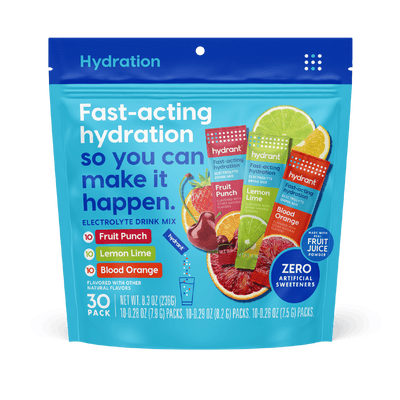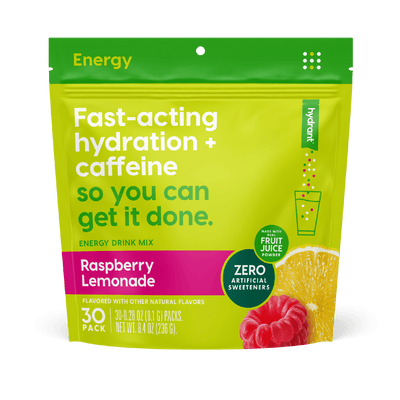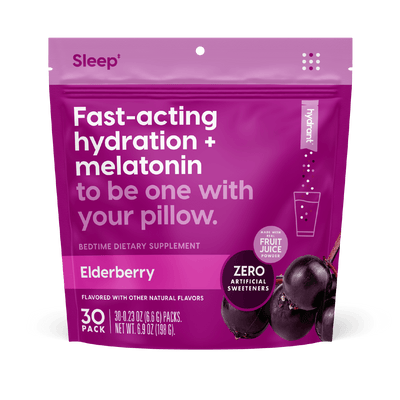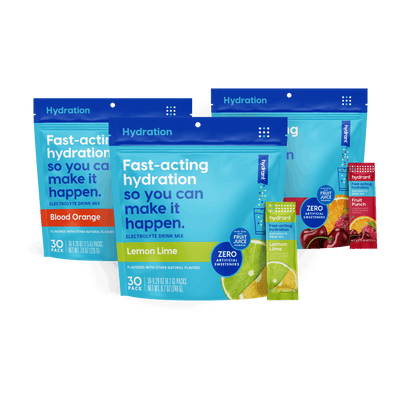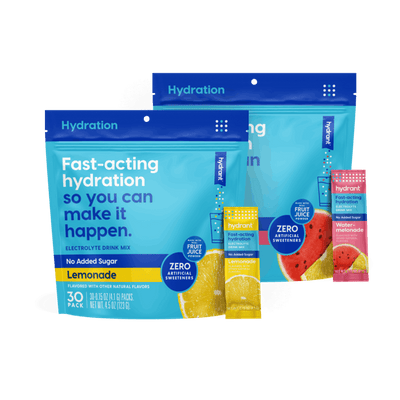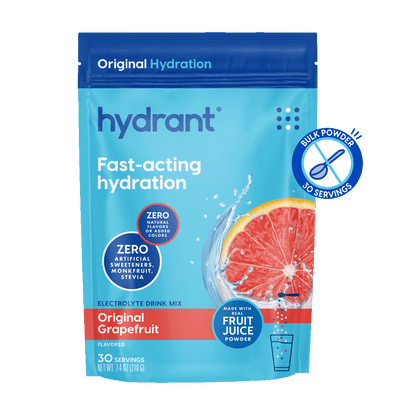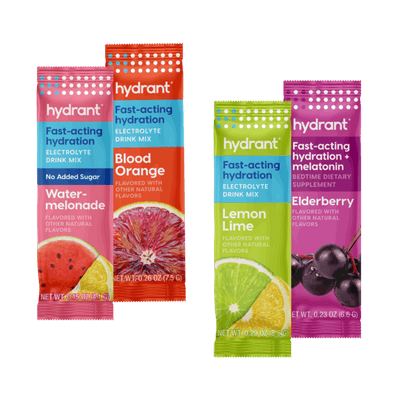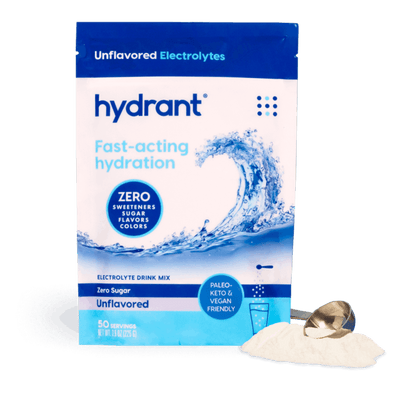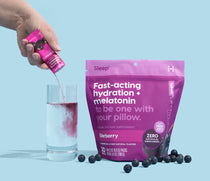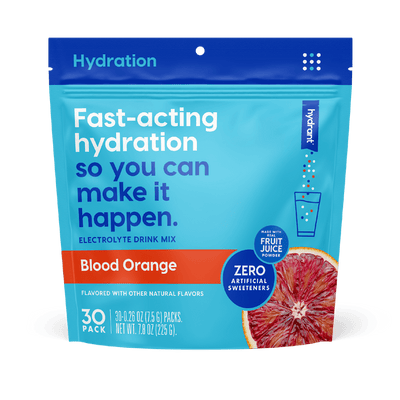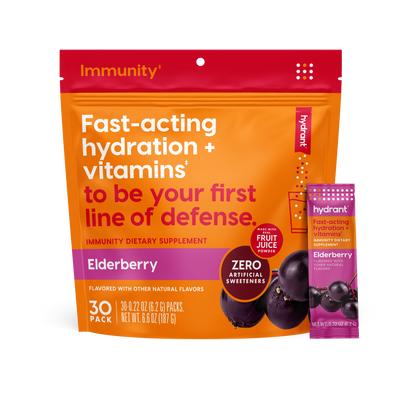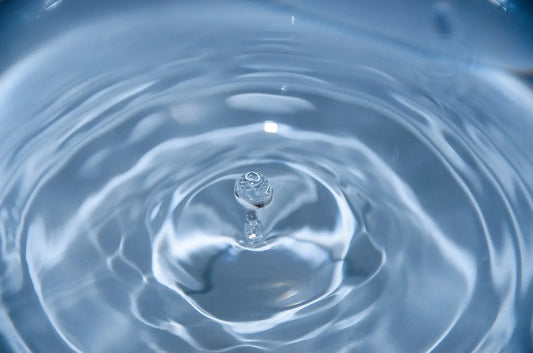Let’s be frank. Truck drivers keep life moving. They serve an essential role in society, and without them our ability to source vital cargo types would be significantly diminished.
Truck drivers keep things moving on a local, national, and international level. But while commercial drivers perform their duties, they must maintain proper levels of hydration, too. Essentially, truck drivers run on hydration, but the world runs on truck drivers.
But first, let’s back up a bit, and break down what it actually means to be dehydrated.
Put simply, dehydration takes place when your body is losing more fluid than it's bringing in. If someone is experiencing dehydration, they might start feeling things like:
- Fatigue
- Dizziness
- Confusion
- Fainting
- Rapid breathing
—and more.
Based on these symptoms alone, it’s easy to see how the dehydration symptoms listed above can hinder a commercial driver’s ability to get things done.
That’s where we can help. Our goal in creating this article is to help commercial drivers understand the importance of hydration, and provide them with a few tips for job success.
Here’s a few things that commercial truck drivers can do to keep their focus on one thing: the road.

Drink Water Regularly
This one seems obvious. But that’s because it really does make a difference. The Mayo Clinic recommends that males consume 15.5 cups of water per day, and women drink 11.5 cups of water daily.[ii] Drinking 15 cups of water may seem like a hassle, but one tip we’ve found is to sip water consistently and combine water servings with meals. Keep in mind that the exact amount of water you need per day depends on your health and daily activities, so if unsure, consult your primary care provider for general guidelines.
The reality is, 15 cups might seem much higher than the average water level you consume daily. But if so, you’re not alone. In fact, nearly 75% of Americans are chronically dehydrated. [iii]
This might seem like a shockingly high number of Americans, but the survey that found this statistic also uncovered the (not so shocking) truth: America's daily consumption of water is often offset by caffeine, alcohol, and/or high sodium foods. Even if people are drinking water consistently throughout the day, they might still be dehydrated from offsets like these in the daily routine.
Skip the Extra Coffee, Sports Drinks, or Energy Drinks
We understand the importance of coffee in many people's lives (we’re no strangers to a morning cup!). In fact, 2020 statistics reflect that over half of the U.S. population drinks coffee daily.[iv]

While there's nothing wrong with swinging by your favorite coffee shop or firing up your home coffee machine to enjoy a cup, it's essential to be aware of the dehydrating effects that caffeinated drinks (like coffee) can induce. To get ahead of the symptoms we talked about earlier, one suggestion is to apply the same rule to drinking coffee that others may apply to drinking alcohol: of one glass of water for every 1-2 drinks to counteract the dehydrating effects of coffee. That doesn’t sound so bad, right?
Along with coffee, energy drinks can contain high levels of sugar and caffeine that may act as a catalyst for dehydration. Most traditional sports drinks don’t contain caffeine, but many of them do possess high levels of sugar.
Eat Foods High in Water Content
This one sounds a little ironic, but think about it: Several foods that might already be in your diet are made up of more than 90% water.
These types of foods can be things like: [v]
- Celery
- Watermelon
- Cucumbers
- Cantaloupe
One perk associated with eating foods high in water content is that your body feels fuller when you’re hydrated. When you feel full, you’re less likely to grab sugary or salty snacks that accelerate dehydration.
If you're striving to reduce the calories you consume, hydrating foods are celebrated for their low-calorie content. We recommend watermelon as the best hydrating fruit to consume as it’s 92% water—not to mention, it’s just flat-out delicious[vi]
Establish a Hydration Schedule
Creating a schedule to stay hydrated can go a long way toward helping you perform at peak levels on the road. You don’t necessarily have to mark your calendar with times to hydrate, but it can be as easy as using apps on your phone, or keeping an eye out on the clock.
We understand that it can be easy to overlook hydration if you’re not in the habit of making it a priority. Not establishing a hydration routine is especially dangerous for commercial drivers embarking on long-distance routes. Establishing a hydration schedule can help lead to you making hydration a priority.
Once you’ve been sticking to a hydration schedule that works for you, chances are you won’t need a schedule after a while, and you’ll be able to hydrate efficiently by yourself.
Find a Happy Medium with Bathroom Breaks
We all understand that commercial drivers can’t be stopping every 15 minutes to go to the bathroom, as they have scheduled routes to fulfill. Drinking water naturally causes us to use the restroom, so how can you find the balance?
After you do your best to use the restroom before embarking on your route, try drinking water 20-30 minutes before you stop to rest. Rehydrating with water before scheduled breaks should trigger your need to use the restroom so you can achieve hydration and not stop as frequently.
Flavor Your Water with Hydrant
Some people end up dehydrated because they don’t enjoy water’s taste (or lack of taste, at that). One strategy you can use to add some flavor to your water is utilizing Hydrant.

What’s Hydrant?
Hydrant is an electrolyte powder mix that, when combined with water, provides users with rapid hydration through a light, refreshing flavor. It’s designed by an Oxford scientist to hydrate you fast via an optimal blend of balanced electrolytes and real fruit juice powder.
How does it work? The science-backed formula helps to activate the body's sodium-glucose transport mechanism located within the small intestine. Think of this mechanism as a pump to push electrolytes and water in your bloodstream faster. Also, Hydrant's low osmolality translates to fewer particles per unit volume in the liquid, which allows the mix to travel down the body's osmotic gradient faster for rapid absorption.[viii] The result? Rapid, refreshing hydration.
Dangers of Not Staying Hydrated on the Road
Earlier, we touched on how dehydration symptoms can place a commercial driver in danger during their job, but we didn't paint a full picture of these risks. Our goal in covering some of the dangers of not staying hydrated on the road is to motivate commercial truck drivers to prioritize hydration.
Researchers at Loughborough University in the U.K. have concluded that driving while dehydrated can result in the same lack of judgment and performance a person would experience driving drunk.[ix]
While more research is always needed to confirm these findings, the importance of staying hydrated on the road is clear.
A key highlight within this study is the comparison of hydrated drivers making 47 errors in a driving simulator, and dehydrated drivers making as many as 101 mistakes.[ix] Again, this reinforces the importance of staying hydrated on the road, and finding tools that work to maintain optimal hydration.
No one wants to be dehydrated, and we’re here to help with that. Thankfully, there are great ways to prioritize hydration to stay ahead of dehydration, and manage any symptoms you may experience. It’s our goal that, through articles like these, to break down hydration, and help you stay happy and hydrated on the road ahead and beyond.
